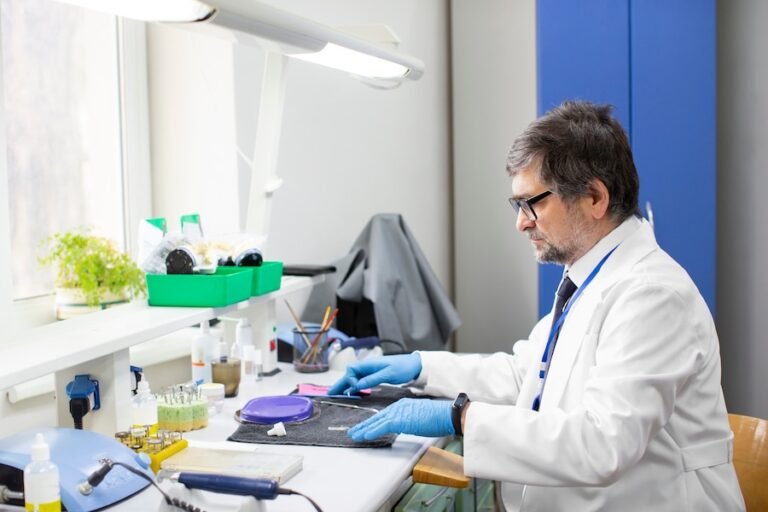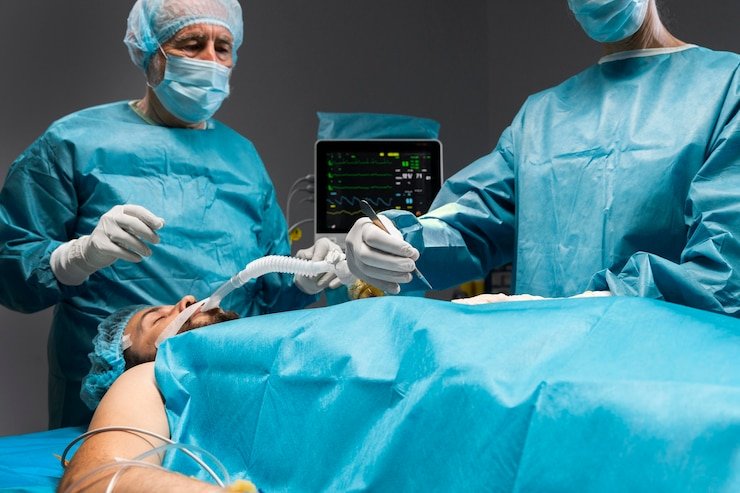Microlaryngeal Surgery: Precision and Innovation in Vocal Health.
The human voice, a powerful and intricate instrument, plays a central role in communication, expression, and identity. When vocal disorders or abnormalities arise, affecting the delicate structures of the larynx, microlaryngeal surgery emerges as a precise and innovative solution. In this article, we will explore the realm of microlaryngeal surgery, its applications, techniques, and the transformative impact it has on restoring and preserving vocal health.
To Know More About It Please Click Here
Understanding Microlaryngeal Surgery
Microlaryngeal surgery, a sub-specialty within otolaryngology (ENT), focuses on the diagnosis and treatment of disorders affecting the larynx, commonly known as the voice box. The procedure utilizes microsurgical techniques, specialized instruments, and advanced visualization systems to operate on the delicate structures of the larynx with unparalleled precision.
Applications of Microlaryngeal Surgery
Vocal Cord Nodules and Polyps
Microlaryngeal surgery is frequently employed to remove benign growths such as vocal cord nodules and polyps. These lesions can impact voice quality and are often associated with vocal strain or misuse.
Reinke’s Edema
This condition involves the swelling of the vocal folds due to fluid accumulation. Microlaryngeal surgery allows for the removal of excess tissue, restoring normal vocal fold function.
Vocal Cord Paralysis
Microlaryngeal surgery can be used to address vocal cord paralysis by repositioning the affected vocal cord or performing procedures such as vocal fold injection or thyroplasty.
Laryngeal Cancer
In cases of early-stage laryngeal cancer, microlaryngeal surgery may be employed to excise the cancerous tissue while preserving as much of the healthy tissue and vocal function as possible.
Techniques and Instruments
Microscopic Visualization
Microlaryngeal surgery relies on powerful microscopes that provide a magnified view of the laryngeal structures. This enhanced visualization allows surgeons to navigate the intricate anatomy with precision.
Laser Technology
Laser-assisted microlaryngeal surgery utilizes focused laser beams to precisely cut or vaporize abnormal tissues, offering a bloodless and controlled approach.
Microlaryngeal Instruments
Specialized instruments, including microforceps, microscissors, and micro-suction devices, are designed to facilitate delicate procedures in the confined space of the larynx.
Fiber-Optic Endoscopy
Fiber-optic endoscopes allow real-time visualization of the larynx, enabling the surgeon to navigate and perform procedures with precision.
Patient Benefits:
Preservation of Voice Quality
Microlaryngeal surgery aims to address vocal disorders while preserving or improving voice quality. This is particularly crucial for individuals who rely on their voices for professional reasons, such as singers, actors, and public speakers.
Minimally Invasive Approach
The minimally invasive nature of microlaryngeal surgery results in smaller incisions, reduced scarring, and faster recovery times compared to traditional open surgical procedures.
Customized Treatment Plans
Microlaryngeal surgery allows for tailored treatment plans, ensuring that interventions are specific to the patient’s condition and needs.
To Know More About It Please Click Here
Conclusion
Microlaryngeal surgery stands as a testament to the evolving landscape of medical technology and its application in preserving and restoring vocal health. As advancements in instrumentation and techniques continue, the field holds promise for further enhancing outcomes, minimizing invasiveness, and expanding the scope of conditions that can be effectively addressed through microlaryngeal surgery. Ultimately, this specialized form of surgery plays a pivotal role in empowering individuals to regain control over their voices and, by extension, their ability to connect, communicate, and express themselves.








